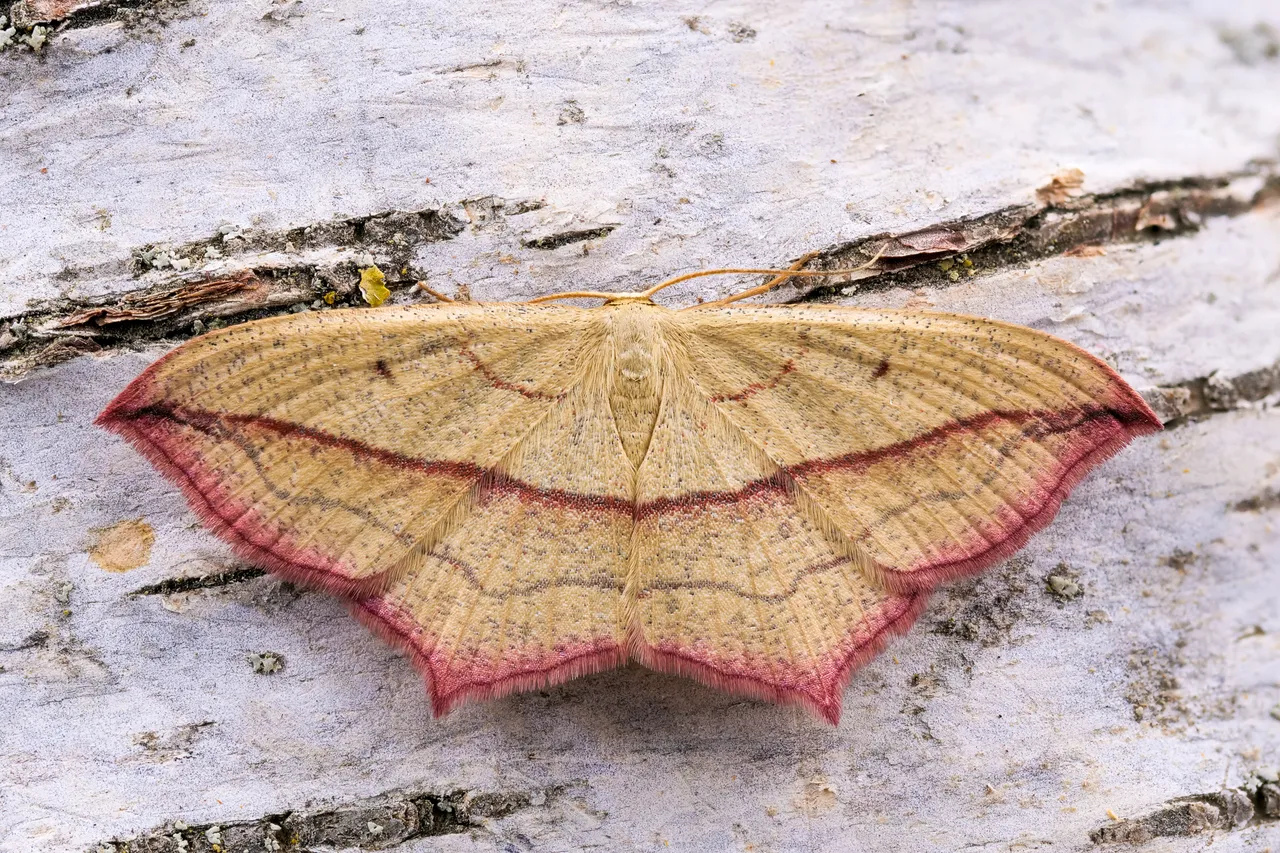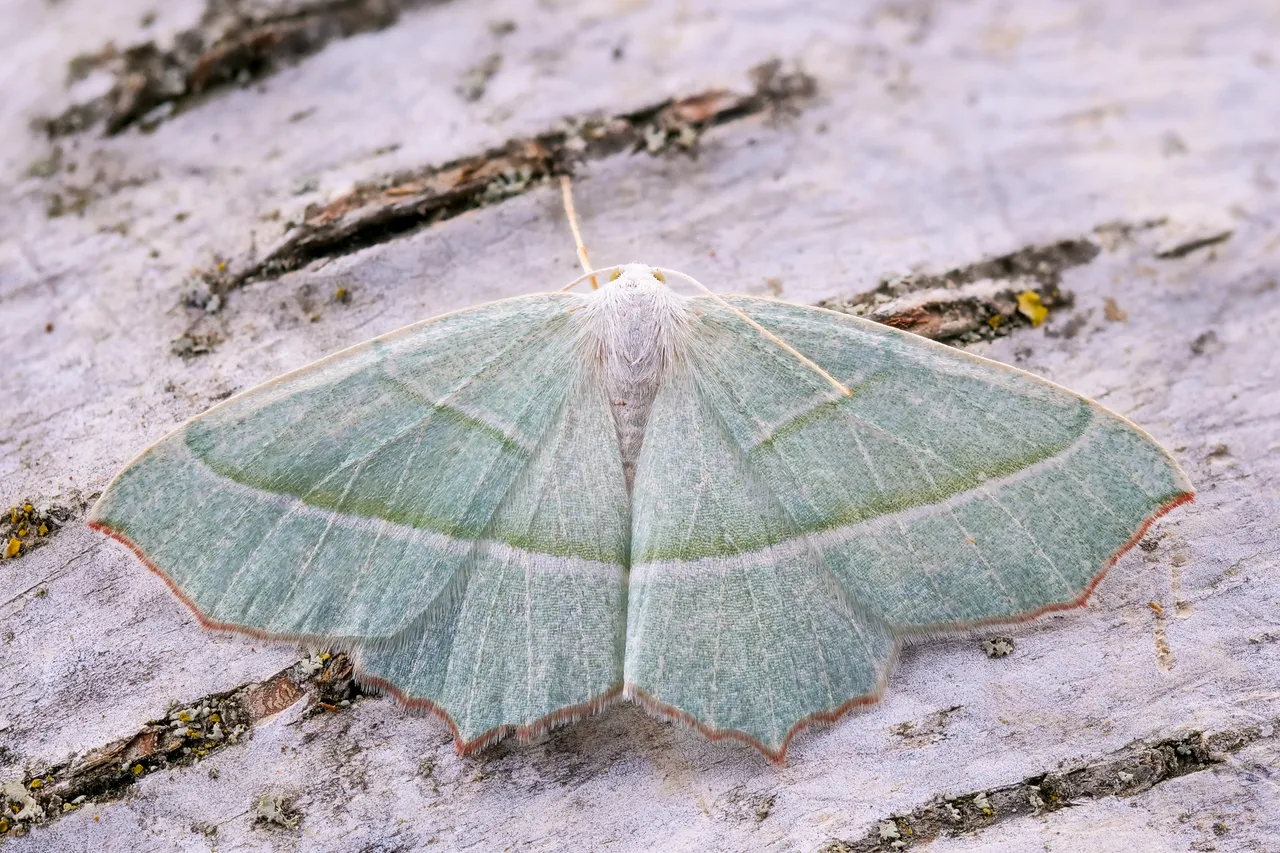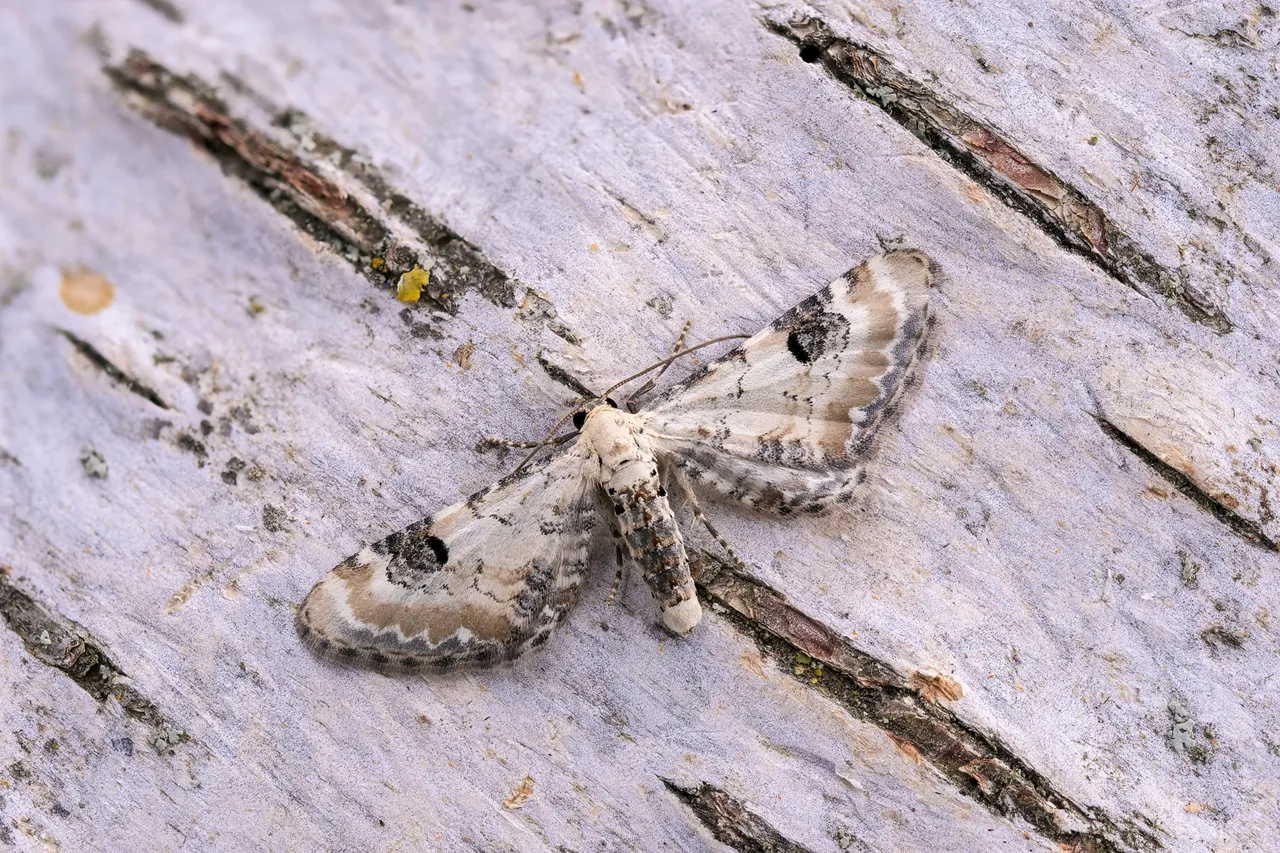Ampferspanner ■ The blood-vein
Timandra comae (Schmidt, 1931)
Der Ampferspanner gehört zu den tagaktiven Nachtfaltern. Er fliegt in Mitteldeutschland in zwei bis drei Generationen von Mai bis Oktober. Die Raupe frisst an unterschiedlichen Ampferarten (Rumex spec.). Der Falter ist noch weit verbreitet und in seinem Bestand derzeit nicht gefährdet.
The blood-vein moth is one of the day-active moths. It flies in Central Germany in two to three generations from May to October. The caterpillar feeds on different Rumex spec. The moth is still widespread and its population is currently not endangered.
♀

▲ Click on the image for full resolution ▲
Perlglanzspanner ■ The light emerald
Campaea margaritaria (Linnaeus, 1761)
Weit verbreitet ist auch der Perlglanzspanner. Der Falter lebt bevorzugt in Laubmischwälder, aber auch in Siedlungsbereichen ist er zu Hause. Seine Eier legt er an unterschiedliche Laubbäume, von denen sich die Raupen ernähren. Der Falter fliegt in zwei Generationen von Mai bis Oktober. Dieses Jahr konnte ich diesen Falter regelmäßig und zahlreich beobachten.
The light emerald is also widely spread. The moth prefers to live in mixed deciduous forests, but it is also at home in settlement areas. It lays its eggs on various deciduous trees, on which the caterpillars feed. The moth flies in two generations from May to October. This year I could observe this moth regularly and numerously.
♀

▲ Click on the image for full resolution ▲
Mondfleckiger Blütenspanner ■ Lime-speck pug
Eupithecia centaureata
Als dritten Nachtfalter aus der Familie der Spanner (Geometride) möchte ich euch heute den mondfleckigen Blütenspanner zeigen. Er ist relativ klein und seine Schönheit kommt erst durch eine Makroaufnahme so richtig zur Geltung. Der Falter flieget an Waldrändern und Trockenrasen in ein bis zwei Generationen von April bis September. Die Raupen sind nicht wählerisch und ernähren sich von unterschiedlichen Dolden- und Korbblütlern.
As the third moth from the family of Geometride I would like to show you today the lime-speck pug. It is relatively small and its beauty can only be appreciated by taking a macro photograph. The moth flies along forest edges and dry grasslands in one or two generations from April to September. The caterpillars are not fussy and feed on different umbellifers and composite plants.

▲ Click on the image for full resolution ▲
| Category: | Macro |
| Camera: | Panasonic Lumix DC-G9 |
| Lens: | Olympus M.Zuiko Digital ED 60mm 1: 2.8 Macro |
| Location: | Germany, Bavaria, Lower Franconia, Kreuzwertheim |
Wenn dir mein Beitrag gefällt, freue ich mich über deine Nachricht.
Herzlichen Dank und viele Grüße vom @faltermann 🐛
If you like my contribution, I am looking forward to your message.
Many thanks and greetings from Germany 🦋

